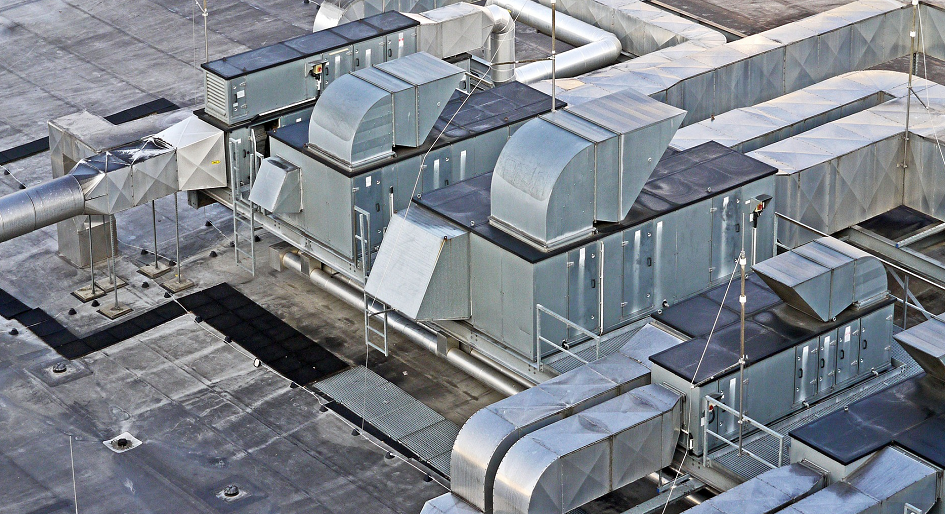Noticing signs of mould in your air ducts? Here are some signs to watch for and tips for dealing with this important health and safety consideration.
Red flags
Odours. An unusual or musty odor is often the first sign of mould in air ducts. In many cases, you’ll smell it before you can see it. If you notice a musty smell that goes away when you are not using your air conditioning or heating (if they share ducts), that can narrow the cause down to some part of your HVAC system. Mould can smell wet, rotten, or stale. If you notice a recurring problem, particularly in areas with poor ventilation or a lot of moisture, get it checked out right away.
Visible mould. Look for the first signs of mould around AC vents, in the ducts and in the drip pans. Condenser coils pull moisture out of the air and into drip pans, and if these become clogged they create the perfect environment for mould to grow.
Keep in mind that mould spreads through spores, which are tiny particles that are invisible to the naked eye. That means you won’t necessarily see actual patches of mould growth right away. By the time you do see a noticeable amount of mould, infestation can be quite serious. At that point, you need professional help to get rid of the mould and make sure it doesn’t come back.
Symptoms. If people or pets in your home start exhibiting symptoms whenever the AC is on, mould in air ducts might be the cause. If there’s enough mould in or around the vents, it can spread in the air, causing allergy like symptoms such as headaches, nausea, irritated nose and throat, and itchy eyes.
What causes mould to grow in air ducts?
Mould grows in ductwork when two things are present: moisture and warm temperatures. A warm, humid environment has the ideal conditions for mould to form. A humid climate along with poor ventilation, or anything that traps moisture in your walls and causes condensation, can lead to mould in air ducts.
Here are some of the HVAC problems that can contribute to these conditions and ultimately mould growth:
If your AC unit is oversized for the space you have, one of the problems that it can cause is mould in air ducts. Larger units can cool small spaces too quickly and turn off before dehumidifying the air, leading to excess moisture. This moisture can build up in your rooms and ductwork. If you see mould shortly after a new installation, check to make sure you’ve got the proper sized equipment for the space you have.
Setting your AC on a very low temperature can sometimes lead to mould around the vents. When the cool air from the vents meets the warm air in the room, the temperature difference can cause moisture in the air to condense on surfaces in and around the vents. If that moisture builds up and never gets a chance to dry out, it can lead to mould growth. This is called the temperature differential and usually takes about 20 degrees of difference for moisture to form. If you don’t notice it for a while, the moisture can make its way into your air ducts.
However, if your ducts have leaks that let in warm air, this temperature differential can cause the same kind of problem. The difference between the cold air in the ducts and warm air in the walls can cause moisture to condense on the ducts, giving mould a perfect environment to grow. In this case, you’ll need extensive duct cleaning with mould remediation, and you’ll want to make sure to seal up the leaks in the ducts to prevent the problem from returning.
Why you need a professional to remove mould
Hiring a professional to clean may seem like an unnecessary expense, but technicians can take care of mould and help prevent it from coming back more effectively and safely than you can do yourself.
First of all, scrubbing mould with ordinary cleaners won’t make it go away. Regular cleaning products will leave behind enough mould for it to easily grow back. Professionals have the proper equipment to protect themselves and your home or business from not only the mould, but the chemicals they use to clean it.
More importantly, you can accidentally damage your HVAC system if you try to clean mould in air ducts yourself. Professionals know what to look for and how to treat your AC with care. Professional ductwork cleaners have HVAC training, so they’ll be familiar with your system and know how to clean it without damaging it. They also use the correct mould growth inhibitor products to prevent it from coming back, and they know how to properly dispose of tools to prevent contaminating other areas.
This article was reprinted with permission from Arista.




